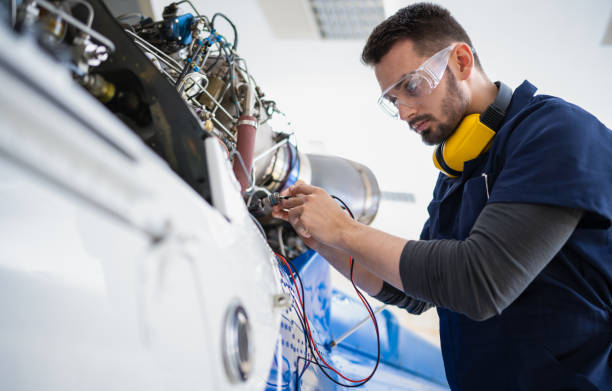Do you find non-destructive testing (NDT) an interesting process in the engineering industry? This is indeed crucial for ensuring quality, reliability, and safety in certain industries, including aerospace, construction, manufacturing, and oil and gas.
Significance of NDT in Engineering
This process is important in industry because it can prevent failures by detecting defects before they even cause breakdowns. These include cracks, corrosion, or voids in the components. Moreover, it is a cost-effective method because it avoids expensive repairs or replacements by catching issues early.
In terms of safety, NDT also helps maintain quality control because manufacturers are able to meet strict industry standards. Unlike destructive testing, NDT keeps components usable even after testing.
Common Methods of Non-Destructive Testing
One of the methods utilised in NDT is ultrasonic testing. This method uses sound waves to detect internal flaws. They also use magnetic particle testing that finds surface cracks in ferromagnetic materials. Another method is radiographic testing that uses x-rays or gamma rays to inspect welds and structures.
Many other NDT methods are also used in engineering, particularly liquid penetrant testing. This highlights any surface defects with the use of a special dye. In addition, they also use eddy current testing, which detects cracks and corrosion in conductive materials.
Various NDT Applications in Engineering
- Aerospace Engineering
This field of engineering uses both ultrasonic testing and eddy current testing. The industry will be able to determine the existence of cracks hidden in aircraft wings. At the same time, they will be able to inspect turbine blades if there are corrosion present even without the need to disassemble the engine.
- Civil Engineering and Construction
Concrete structures need to be inspected for voids or rebar. One way of doing this is through ground penetrating radar. Other areas include welds in bridges and pipelines, which require quality checking through radiographic testing.
- Automotive Industry
It is also very important to ensure that engine parts and axles are free from cracks. Therefore, you have to use magnetic particle testing to do it. Liquid penetrant testing is also another method that will help find any defects in alloy wheels and suspension components.
- Oil and Gas Industry
The thickness of the pipelines also requires monitoring in order to avoid the presence of leaks. You can use ultrasonic testing in this process. Additionally, you may ensure that offshore platform welds are free from defects if you use radiographic testing.
- Power Plant and Nuclear Industry
The use of eddy current testing can also help you inspect steam generator tubes in nuclear reactors. Likewise, you can rely on acoustic emission testing in order to detect failures in pressure vessels of power plants.
Do you need to hire the services of an NDT team to inspect and analyse workpieces accurately and efficiently? You can rely on us to conduct non destructive material testing for a specific project. Talk to us through our website or contact us via phone or email, so we can discuss the type of NDT to suit any type of engineering needs.
